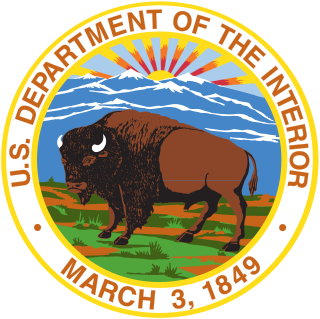
The United States secretary of the interior is the head of the United States Department of the Interior. The secretary and the Department of the Interior are responsible for the management and conservation of most federal land along with natural resources,leading such agencies as the Bureau of Land Management,the United States Geological Survey,Bureau of Indian Affairs and the National Park Service. The secretary also serves on and appoints the private citizens on the National Park Foundation Board. The secretary is a member of the United States Cabinet and reports to the president of the United States. The function of the U.S. Department of the Interior is different from that of the interior minister designated in many other countries.
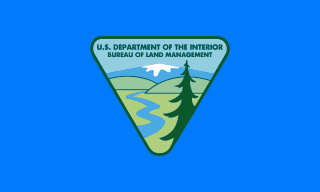
The Bureau of Land Management (BLM) is an agency within the United States Department of the Interior responsible for administering U.S. federal lands. Headquartered in Washington,D.C.,the BLM oversees more than 247.3 million acres (1,001,000 km2) of land,or one-eighth of the United States's total landmass.

The United States Department of the Interior (DOI) is an executive department of the U.S. federal government responsible for the management and conservation of most federal lands and natural resources. It also administers programs relating to Native Americans,Alaska Natives,Native Hawaiians,territorial affairs,and insular areas of the United States,as well as programs related to historic preservation. About 75% of federal public land is managed by the department,with most of the remainder managed by the Department of Agriculture's Forest Service. The department was created on March 3,1849. It is headquartered at the Main Interior Building,located at 1849 C Street NW in Washington,D.C.

The General Mining Act of 1872 is a United States federal law that authorizes and governs prospecting and mining for economic minerals,such as gold,platinum,and silver,on federal public lands. This law,approved on May 10,1872,codified the informal system of acquiring and protecting mining claims on public land,formed by prospectors in California and Nevada from the late 1840s through the 1860s,such as during the California Gold Rush. All citizens of the United States of America 18 years or older have the right under the 1872 mining law to locate a lode or placer (gravel) mining claim on federal lands open to mineral entry. These claims may be located once a discovery of a locatable mineral is made. Locatable minerals include but are not limited to platinum,gold,silver,copper,lead,zinc,uranium and tungsten.

The United States Senate Committee on Energy and Natural Resources is a standing committee of the United States Senate. It has jurisdiction over matters related to energy and mineral resources,including nuclear development;irrigation and reclamation,territorial possessions of the United States,trust lands appertaining to America's indigenous peoples,and the conservation,use,and disposition of federal lands. Its roots go back to the Committee on Interior and Insulars Affairs. In 1977,it became the Committee on Energy and Natural Resources,and most matters regarding Native Americans,Alaska Natives,and Native Hawaiians were removed from its jurisdiction and transferred to the Committee on Indian Affairs.
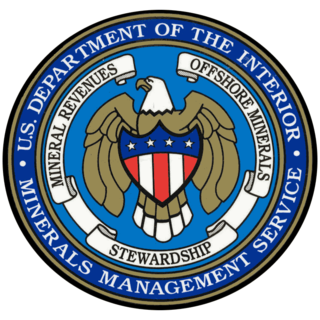
The Minerals Management Service (MMS) was an agency of the United States Department of the Interior that managed the nation's natural gas,oil and other mineral resources on the outer continental shelf (OCS).
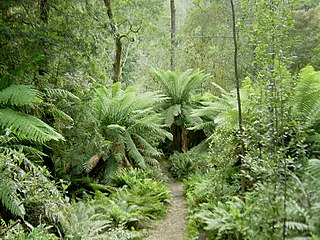
The Tarkine,officially takayna / the Tarkine,is an area containing the Savage River National Park in the north west Tasmania,Australia,which contains significant areas of wilderness. The Tarkine is noted for its beauty and natural values,containing the largest area of Gondwanan cool-temperate rainforest in Australia,as well as for its prominence in Tasmania's early mining history. The area's high concentration of Aboriginal sites has led to it being described by the Australian Heritage Council as "one of the world's great archaeological regions".

The U.S. House Committee on Natural Resources or Natural Resources Committee is a Congressional committee of the United States House of Representatives. Originally called the Committee on Interior and Insular Affairs (1951),the name was changed to the Committee on Natural Resources in 1991. The name was shortened to the Committee on Resources in 1995 by the new chairman,Don Young. Following the Democratic takeover of the House of Representatives in 2006,the name of the committee was changed back to its title used between 1991 and 1995.
The United States House Natural Resources Subcommittee on Energy and Mineral Resources is one of the five subcommittees within the House Natural Resources Committee
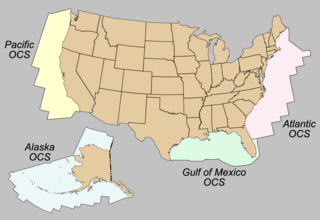
The Outer Continental Shelf (OCS) is a legally defined geographic feature of the United States. The OCS is the part of the internationally recognized continental shelf of the United States which does not fall under the jurisdictions of the individual U.S. states.
Natural resources are materials that occur in a natural form within environments. These can be classified as either biotic or abiotic on the basis of their origin. The landmass and the territorial waters of Cambodia contain a rather moderate amount,array and variety of resources. Apart from water,abiotic resources,such as minerals are generally rare. Still,advanced geo-scientific technologies have produced remarkable results and re-assessments in recent years,such as the localization of offshore oil and gas depots in the Gulf of Thailand. Cambodia,on the other hand possesses a relatively wide range of biotic resources,in particular timber,forest products,rare plants and a fauna of great diversity.

Offshore drilling for oil and gas on the Atlantic coast of the United States took place from 1947 to the early 1980s. Oil companies drilled five wells in Atlantic Florida state waters and 51 exploratory wells on federal leases on the outer continental shelf of the Atlantic coast. None of the wells were completed as producing wells. All the leases have now reverted to the government.

The Bureau of Safety and Environmental Enforcement is an agency under the United States Department of the Interior. Established in 2011,BSEE is the lead agency in charge of improving safety and ensuring environmental protection relating to the offshore energy industry,mainly natural gas and oil,on the United States Outer Continental Shelf (OCS). The agency exercises the safety and environmental enforcement functions formerly under the Minerals Management Service,including the authority to inspect;investigate;summon witnesses and produce evidence;levy penalties;cancel or suspend activities;and oversee safety,response,and removal preparedness.
The Foundation for Natural Resources and Energy Law, formerly Rocky Mountain Mineral Law Foundation,is an educational,non-profit organization dedicated to the scholarly and practical study of all aspects of natural resources and energy law.
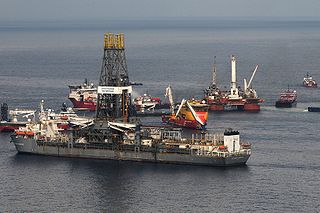
The Deepwater Horizon investigation included several investigations and commissions,among others reports by National Incident Commander Thad Allen,United States Coast Guard,National Commission on the BP Deepwater Horizon Oil Spill and Offshore Drilling,Bureau of Ocean Energy Management,Regulation and Enforcement,National Academy of Engineering,National Research Council,Government Accountability Office,National Oil Spill Commission,and Chemical Safety and Hazard Investigation Board.

Marian Blank Horn is a senior judge of the United States Court of Federal Claims.

Michael Lee Connor is an American politician,lawyer and engineer. He has served as the United States Assistant Secretary of the Army for Civil Works since November 2021,and served as the United States Deputy Secretary of the Interior from 2014 to 2017,among other positions in United States Department of the Interior.

Wilma Antoinette Lewis is a United States district judge of the District Court of the Virgin Islands. She previously served as the first female United States Attorney for the District of Columbia.

Ryan Douglas Nelson is a United States circuit judge of the United States Court of Appeals for the Ninth Circuit. He was previously nominated to become Solicitor of the United States Department of the Interior,but was never confirmed.
Rhea Lydia Graham is an American retired geologist with a background in environmental consulting and engineering geology and was made the last director of the United States Bureau of Mines,as well as the first female as well as African-American director,by President Bill Clinton and the United States Senate in 1994.















